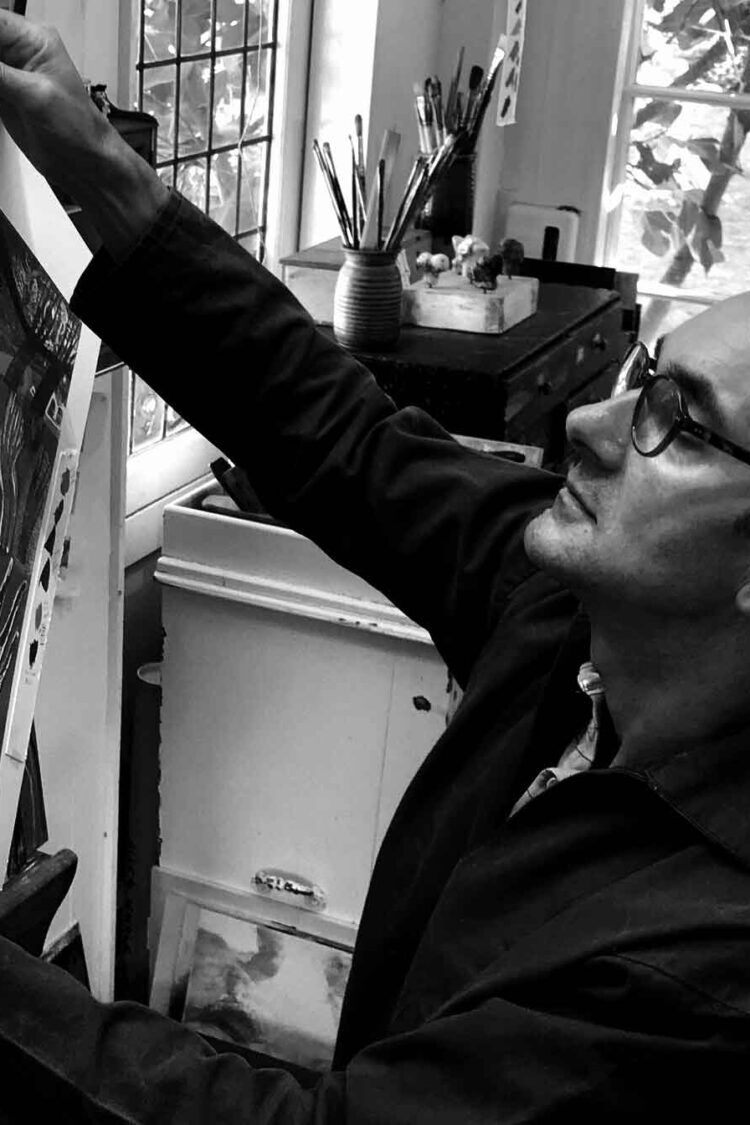Prints
Painting references printmaking, the surface is important in evoking the same sense of the past. Leaving traces of previous marks, scratches, shapes and colours creates a half forgotten narrative running below the surface.
I am inspired by the British landscape and my work references the past in relation to the future.
When my father left the Navy we farmed a hill farm in West Wales. Working on the land brought me very close to the elemental in the landscape, able to see through the picturesque and understand how deep connections and bonds are formed when we live in harmony with the land.
We've marked the landscape for millennia with walls, boundary stones, ancient trees, carvings and markers. I'm interested in how communities navigated their landscape using these local reference points often giving them characteristic names some of which have now lost their meaning but all give us an insight into the past.
I'm also interested in how our understanding of the landscape as being permanent has recently altered, we have moved from being in awe of the landscape to being able to influence the landscape in such a way as to produce irreparable change. The stumps of great forests fossilised and exposed at particularly low tides give us a glimpse of lost causeways hinting at previous upheavals and give us an understanding of the fragility of the landscape we know.
Living and working in Kent, the art of Melvyn Evans encompasses linocut, painting and illustration. The task of skilfully mastering one is to be admired let alone these three different ways of creating and thinking.
Melvyn Evans studied illustration at Exeter College of Art and Design, followed by a year at Goldsmiths College, London. He then took up drawing classes at the Royal College of Art under the tuition of Bryan Kneale RA. He became a professional artist, printmaker and illustrator in 1992. Evans has developed a signature style of strong, bold imagery, with inspiration coming from artists such as Edward Bawden, Eric Ravilious, Henry Moore and the St Ives School. His work has been widely exhibited throughout the UK, including at the Royal Academy, the Royal College of Art and Somerset House.





























